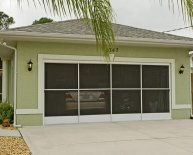
House Windows Sun Screen
You can choose window treatments or coverings not only for decoration but also for saving energy. Some carefully selected window treatments can reduce heat loss in the winter and heat gain in the summer. Window treatments, however, aren't effective at reducing air leakage or infiltration. You need to caulk and weatherstrip around windows to reduce air leakage.
Awnings
Window awnings can reduce solar heat gain in the summer by up to 65% on south-facing windows and 77% on west-facing windows. You can use an awning to shade one window or have an awning custom-made to shade the entire side of your house.
In the past, most awnings were made of metal or canvas, which need to be re-covered every five to seven years. Today, awnings are made from synthetic fabrics such as acrylic and polyvinyl laminates that are water-repellent and treated to resist mildew and fading. Whatever the fabric, you should choose one that is opaque and tightly woven. A light-colored awning will reflect more sunlight.
Awnings require ventilation to keep hot air from becoming trapped around the window. Grommets (eyelets) or other openings along the tops and sides of an awning can provide ventilation. The awning may also open to the sides or top to vent hot air.
You can roll up adjustable or retractable awnings in the winter to let the sun warm the house. New hardware, such as lateral arms, makes the rolling up process quite easy.
Blinds
Window blinds—vertical or horizontal slat-type—are more effective at reducing summer heat gain than winter heat loss.
Interior Blinds
Because of the numerous openings between the slats, it's difficult to control heat loss through interior window blinds, but the slats offer flexibility in the summer. Unlike shades, you can adjust the slats to control light and ventilation. For example, when completely closed and lowered on a sunny window, highly reflective blinds can reduce heat gain by around 45%. They can also be adjusted to block and reflect direct sunlight onto a light-colored ceiling. A light-colored ceiling will diffuse the light without much heat or glare.
We’d like to describe in detail Art Condos.
Exterior Blinds
Exterior roller blinds are usually made of wood, steel, aluminum, or vinyl. They're mounted above the window, and side channels guide them as they're lowered and raised. When you lower these blinds completely, their slats meet and provide shade. If partially raised, the blinds allow some air and daylight to enter through windows.
Draperies
A drapery's ability to reduce heat loss and gain depends on several factors, including fabric type (closed or open weave) and color. With such a wide variety of draperies available, it's difficult to generalize about their energy performance.

















